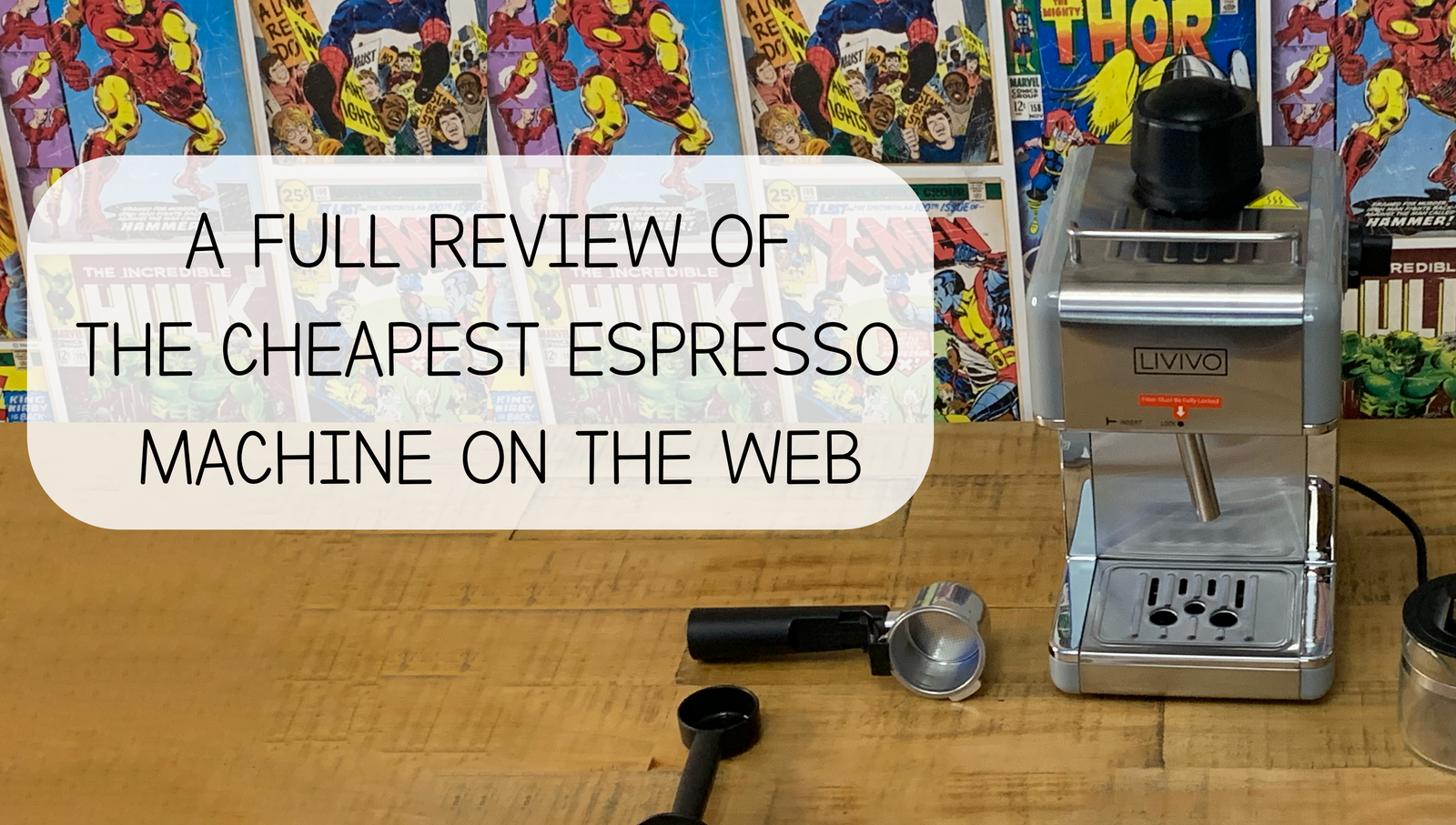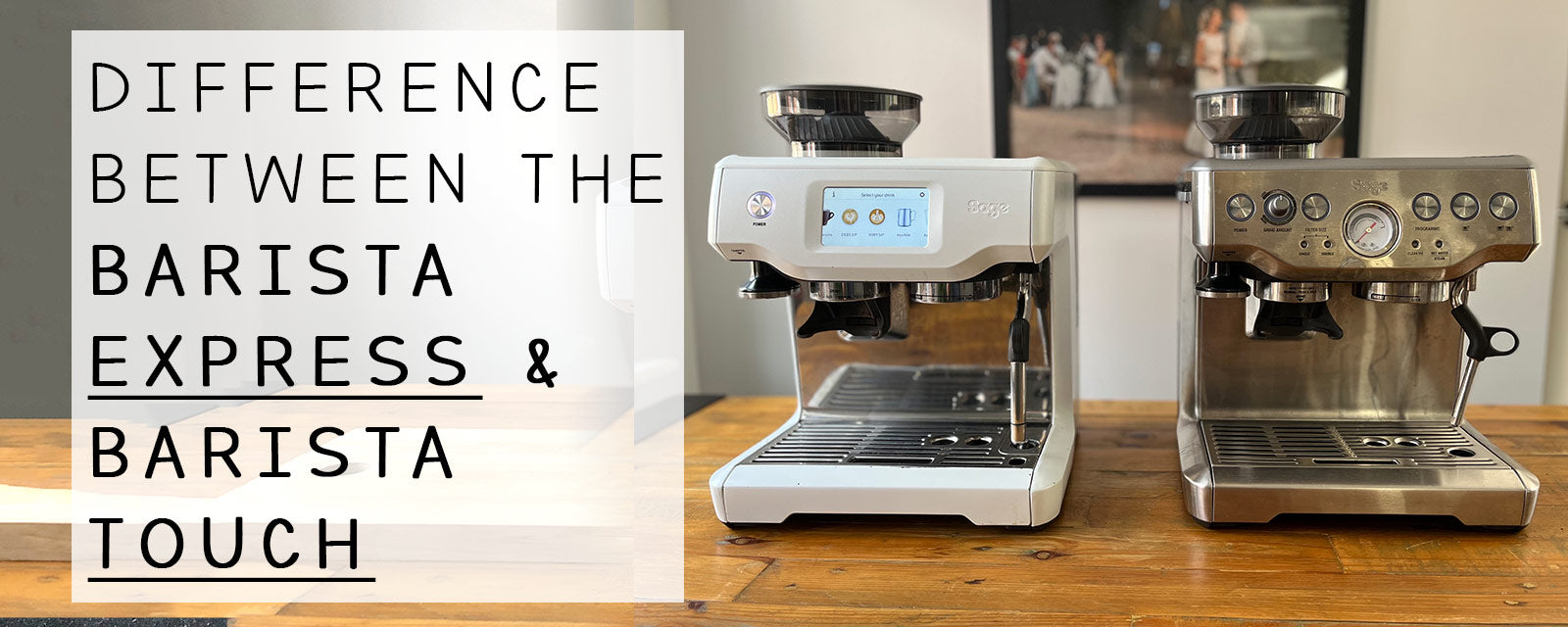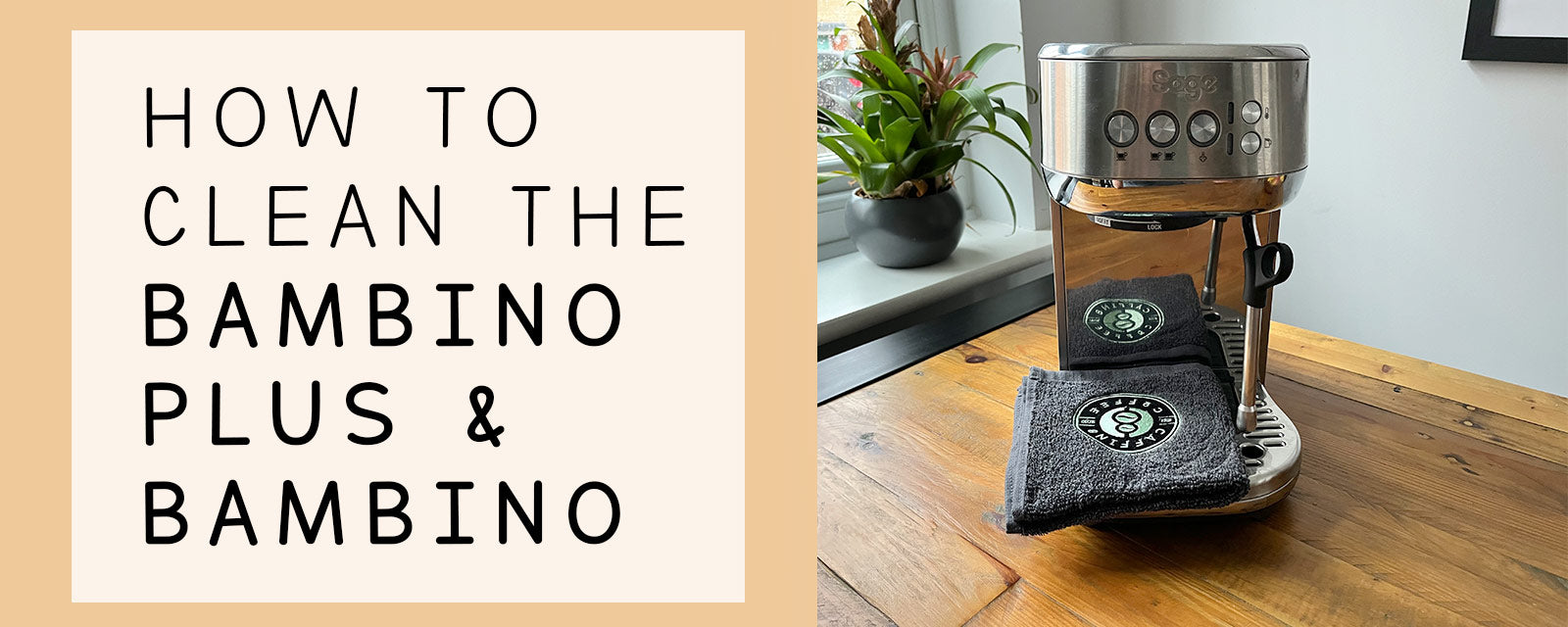
Why do you need this Coffee 101 Guide?
Plainly put: “When it comes to coffee there are so many components to getting good coffee (and most of the time it's jargon looking to confuse you)”.
We’ve made this 101 guide to:
- Explain the most common jargon/terms
- Demonstrate that good coffee should be for everyone not just the experts
- Help you pick great coffee.
In this coffee 101 we will cover the following 17 sections below. Just click any of these to jump to that section:
- Importance of the Bean Type
- Impact of origin on the coffee
- The different types of coffee roast
- Caffeinated vs Decaffeinated
- Different Grind Types and what methods to use them with
- A coffee brewing guide - a look at the most popular way to brew coffee
- Cafetière
- V60/Pour over
- AeroPress
- Stovetop/Moka
- Espresso Machine
- Key things to know when picking a brewing method
- Ranking the brewing methods
- Is fresh coffee better?
- Things to know about the average UK coffee shop
- Fun facts
- The summary
THE BEAN
Firstly let's tackle types of coffee beans. There are 2 main varieties of coffee beans that make up approximately 96% of the world’s consumption:
Robusta Coffee Beans: |
||
|
Flavour/Quality: |
Growing/Harvest: |
General: |
|
Typically higher caffeine content |
Grown Closer to the Sea level |
Costs less to buy |
|
More potent/acquired flavour profile |
Easier to grow as more disease resistant |
Makes up about 20-25% of global coffee bean consumption |
|
Lower Quality than Arabica |
Mostly grown in Africa and Indonesia |
Produces higher yields than Arabica |
Arabica Coffee Beans: |
||
|
Flavour/Quality: |
Growing/Harvest: |
General: |
|
As little as half the caffeine content of Robusta |
Most often found in South America |
Costs less to buy |
|
Typically more balanced flavour profile |
Taste is impacted by environment/climate more than Robusta |
Makes up around 70% of global coffee bean consumption |
|
Sometime referred to as gourmet coffee |
||
The other two varieties that are discussed are Liberica and Excelsa beans but these account for only a very small part of worldwide coffee consumption, hence why we have only focused on Arabica and Robusta.
ORIGIN
Coffee is primarily produced in countries that sit in the ‘coffee belt’ - basically countries with nice weather across the equator (as seen below)

Each coloured region (in above map) provides a different style of taste in a broad sense.
However the flavour profile differs between countries and even regions within a country due to soil, climate, rainfall, bean variety (as mentioned above) among other things.
This is the reason most coffee brands offer blends of coffee, as it enables a balance of flavours and intensities, and helps with consistency.
THE ROAST
When coffee beans are in their unroasted state they are light green, soft, and have little flavour - this is effectively a raw coffee bean. The reason we roast coffee beans is to draw out the natural flavours and oils that sit within the bean. The darker the roast, the longer and often hotter it has been cooked.
The level at which we roast the bean works in a similar way to cooking a steak. The difference with beans is that there isn’t a certain point which is considered overcooked/too far like there is with steak, as each stage of roasting the beans will pull out different oils and flavour profiles.
Roasting really works like a scale or spectrum (example below)
|
Roast: |
Light |
Medium |
Dark |
|
Colour: |
Matte Light brown colour |
Medium Brown hue |
Shiny Black colour, can visually resemble chocolate |
|
Oil free or Oily Surface: |
Oil free surface |
Relatively oil free surface |
Oily surface |
|
Origin or Roast Flavour Profile: |
Strong origin profile |
Balance taste between Origin and roasting profiles |
Strong roast profile |
|
Taste/Smell: |
Toasted grain, little acidity but sweet and can smell fruity |
Caramel, Citrus, Berries |
Rich, Spicy, Charcoal/Charred |
|
Common names in this Roast Category: |
Light City, Half City, Cinnamon, New England |
Regular, American , City and Breakfast
Medium/Dark Roasts - Full City, After-dinner & Vienna |
French Roast, Italian, Espresso, Continental, New Orleans, and Spanish |
Fun fact: Medium Roast is the USA’s most popular roast type
A visual look at the colour of different coffee roast

TO CAFFEINE OR NOT CAFFEINE
Although a lot of people use coffee as a way to get their caffeine fix, coffee can also be decaffeinated.
The decaffeinating process happens prior to the coffee beans being roasted. Decaf coffee is not 100% free from caffeine - typically decaf coffee has around 3% caffeine compared to its caffeinated counterpart (100%). In order for coffee to be considered decaf at least 90% of the caffeine has to be removed.
There are generally two key ways to decaffeinate coffee - The chemical approach or The Swiss water method.
Both methods are effectively the same; the beans are soaked until the caffeine is nearly all gone, however the chemical way uses Methylene Chloride, whilst the Swiss water Method uses purified water and activated carbon.
Although the Swiss water method is more natural it is an extremely expensive process which is why so few companies use it (and those that do have to charge a lot of money for their coffee).
But don’t fear despite the use of Methylene Chloride in the chemical approach it is perfectly safe to drink and enjoy.
Fun Fact: “The caffeine extracted in this method typically is repurposed by large fizzy drink manufacturers”
Decaf coffees aren’t typically as tasty as their caffeinated equivalents, because caffeine is one of the macro-ingredients within coffee that gives it its distinct bitter and acidic taste.
Very few brands give decaf coffee the time, focus and effort it deserves.
GRIND TYPE
Picking what grind type you want means deciding how finely you want the coffee bean ground. Ultimately the driver for this decision is your brewing method.
Grind size will differ based on your brewing method because each brewing method uses a different extraction method.
An Example: Espresso Machine Vs Cafetiere
Espresso Machine - Requires fine grind due to machine pushing water through with pressure. A fine grind create lots of small layers within the puck (coffee disc) which, when the pressurised water is applied, a clean espresso is pulled through
Cafetiere - A coarse grind is required, here as this method uses a slower process to allow time for the ground coffee beans to infuse with the water, before pushing the strainer cap to the bottom in order to separate the grinds from the infused water. A coarse grind helps minimise the chances of the strainer missing and provides a large surface area for the grind to infuse with the water.
Once again this works in a size scale from coarse (size of 100 and 1000’s) to fine (size of sand).
Many supermarkets, shops and independent coffee store feel that each individual brewing type needs a specific grind size along that spectrum but there are so many different brewing methods we feel this is a real opportunity to get confused. We believe that you can have a high quality result on all brewing methods using just 4 simple grinds.
- WHOLE BEANS:
- For those looking to grind their own beans, they will give you maximum freshness
- CAFETIERE GRIND:
- The easiest of methods, a coarse grind perfect for brewing a cafetière
- FILTER GRIND:
- A fine grind intended for paper filters, ideal for V60 pour-over or AeroPress
- ESPRESSO GRIND:
- The finest grind we offer, spot on for stovetops and espresso machines
A clear breakdown of grind type vs brewing method - The Ideal Matches (In pictures)

BREWING GUIDE
There are so many different ways of brewing coffee it is impossible to include them all in a 101 guide, so we are only going to focus on the core types.
We believe this short list below covers all basic but key variations in mainstream coffee making.
Click on the method in the list below to jump to that brewing method:
Alternatively jump straight to the section where we rank the top 5 methods and give you key things you need to know before you buy:
Cafetiere
Easily the most common brewing method for home brewing as it’s super simple. This is a cheap entry point for anyone interested in brewing fresh coffee at home. This method (as mentioned above) uses time to allow the ground beans to infuse with the hot water. A decent Cafetiere ranges from £10-25 depending on style/size making it very accessible, and also a perfect gift for a friend or family member. They are small and compact, making it very easy to store in the cupboard.
This was actually Co-founder Jake’s first entry into the fresh home brew coffee game.
A Simple 4 Step guide on: “How to brew coffee using an Cafetiere” (In pictures)

V60/Pour Over (Drip)
The pour over (also referred to as drip) method actually might be the process you have seen the most without even realising. We have all seen those films or TV shows based in the USA where they have coffee machines brewing a fresh pot - technically the machine is using a ‘drip’ or ‘pour over’ action. The Drip approach uses gravity to slowly funnel water through the ground coffee beans.
The type of coffee machines mentioned above are a lot less common here in the UK, as Nespresso or Tassimo are more popular here (capsule based coffee). However the same process is used in the V60 pour over method. The beauty of the V60 is it is probably the cheapest way to get into fresh home brew coffee, typically costing only £5/6.
The V60 is simply a cone shaped funnel made by a company called Hario (meaning some people confuse this device's name and refer to the cone shaped filter as a Hario).
Fun Fact: “It is called a V60 as the cone shape depicts a ‘V’ and it is angled at 60’.”
A V60 will do only one cup of coffee on its own. However by simply adding a jug below the V60 you are able to brew up 4 cups of coffee in one go, making this an ideal place to start in home coffee brewing
Although this is a cheap starting point you can add some real pizzaz to this method by adding a ‘Gooseneck’ Kettle. This is a lightweight kettle that has a longer thinner spout than a standard kettle. Standard kettles do have their challenges with this method due to their small spouts and heavy weight.
A Simple 4 Step guide on: “How to brew coffee using an V60” (In pictures)

AeroPress
This one works in a way that kind of combines both the Cafetiere and V60/pour-over method, and we feel this one has a fancy feel to it, as generally it is only used by those that have been enjoying fresh coffee at home for a while. Really this is a social mis-conception, as this is a very easy piece of kit to use. We think this mis-conception is driven by the fact it is the brewing method with the most parts, however it is the most portable (in that it often comes with a travel bag ideal for popping in your rucksack or handbag to take to the office).
The AeroPress uses pressure to pass the water through the coffee and then the filter paper to draw out the coffee, meaning you are able to achieve an espresso style coffee with a relatively cheap piece of kit.
Warning: An AeroPress will only make one cup of coffee - an ideal gift for the coffee enthusiast but not a good option for entertaining.
This piece of kit is typically priced at between £25-£30
A Simple 4 Step guide on: “How to brew coffee using an AeroPress” (In pictures)

StoveTop
Probably one of the less common methods used in homes around the UK, but one that is underrated. This method boils water up and through the coffee until it pushes its own way through a small spout into a well. This is by far the most enjoyable method of brewing that isn’t the full works espresso machine, but a method that firmly requires a proper kitchen and unlikely to be effective in an office environment as it requires a stove. It is possible to make a stovetop coffee on both gas and electric stove. In many ways this is the most constraining method for conditions as it doesn’t utilise a kettle, on the flip side this is actually the most versatile as the stovetop pot is very hard wearing and therefore is perfect for outdoor adventures like camping or even the building site.
You are able to achieve a nice crema on the top of the coffee meaning a solid espresso extraction.
This is also a very low cost style of coffee brewing. Typically a nice stovetop will cost £10 but can be as low as £5.
Note: Crema is formed when a nice clean espresso style extraction has been achieved.
A Simple 4 Step guide on: “How to brew coffee using a Stovetop” (In pictures)

Espresso machine
Now this one really is the ultimate way to go but of course with anything that is considered the professional approach there is a significant cost outlay. Using this method is by far going to deliver the best coffee and most accurately replicate that coffee shop experience we all love so much however often there can be a hefty price tag.
The type of machine I am referring to here is not your Nespresso or Tassimo style machine. I am of course referring to an all in one machine with an inbuilt grinder, espresso portafilter, Milk frothing wand and of course temperature control. You can get a pared back version that doesn't include say the grinder or milk wand but for completeness I will cover the full works style machine.
Realistically a machine like this can range massively in price depending on brand etc... kinda like a sports car that said you can easily pick up a decent machine for around £350-£400.
This can be a really advanced way to go and so we strongly recommend using some of the other methods first to get a feel for good coffee and to work out the type of coffee you like.
A Simple 4 Step guide on: “How to brew coffee using an Espresso Machine” (In pictures)
Key things to note when purchasing any of the above brewing methods:
When picking up any form of brewing method you want to know exactly how many cups you can make at a time.
This is particularly important for the Cafetiere, Stovetop and the V60 Jug as they normally state a large number which we believe is slightly misleading.
Although they aren’t lying in their advertisement they are referring to the number of espresso size drinks you can make ( along with a splash of extra water - around 100-150ml total) (what Italy might consider a cup).
However we think when we hear a cup/mug in the UK we are thinking Coffee/Tea Mug (standard 340ml cup).
This can be particularly disappointing when you buy a 8 cup cafetiere thinking it will ideal for entertaining but in really are only able to get 2 or 3 cups out of it,
Ranking the brewing methods
We will mark the above brewing methods on a spectrum for speed, cost, simplicity, storage space, east of cleaning and overall result.
We have scored each item on its own merit and not ranked it against the others.
- 1 is GOOD/EASY
- 5 is NOT GREAT/HARD
|
Brewing Method |
Cafetiere |
AeroPress |
V60/Drip Coffee |
Stovetop |
Espresso Machine |
|
Speed (Lower is Quicker thus Better) |
3 |
1 |
3 |
3 |
3 |
|
Cost (Lower is Cheaper thus Better) |
1 |
3 |
1 |
1 |
4 |
|
Simplicity (Lower is Easier thus Better) |
1 |
3 |
3 |
2 |
4 |
|
Storage Space (Lower is Less Space thus Better) |
2 |
1 |
1 |
2 |
4 |
|
Ease of Cleaning (Lower is Easier thus Better) |
2 |
3 |
2 |
3 |
4 |
|
Overall Coffee result (Lower is Better Coffee) |
3 |
3 |
3 |
2 |
1 |
|
Total Score (Works like Golf Lower is Better) |
12 |
14 |
13 |
13 |
20 |
|
Rank |
1st |
3rd |
2nd |
2nd |
4th |
Recommended purchases by brewing method
In all cases below we have provided Amazon and John Lewis short links and prices of good quality coffee brewing methods.
These are not affiliate links and we do not get paid for these links.
|
Brewing Method |
Price |
Link |
|
Cafetiere - Single Cup |
£12.99 |
|
|
Cafetiere - 3 Cup |
£15.87 |
|
|
AeroPress |
£29.99 |
|
|
V60 (No filter papers) |
£5 |
|
|
V60 with Jug + Filters |
£20 |
|
|
American Style Drip |
£26.99 |
|
|
Stovetop |
£17.99 |
|
|
Espresso Machine |
£399 |
FRESHER IS BETTER?
We’ll keep this one short and sweet. Freshly ground coffee will taste better than the same coffee ground days,weeks (or even months ago). Nothing tastes better than a freshly ground coffee.
Some places say that coffee goes off once its ground. In our experience time does deteriorate the coffee a little once ground, but we have found that coffee still tastes great even as much as 12 months after it has been ground, providing it is stored properly.
Storing coffee to preserve its flavour is the same as you would do with a cake. The aim is to minimise the exposure the coffee has to fresh oxygen. The simplest way to do this is to put it in a sealed air-tight container.
Click here for an example of an air-tight storage from amazon
P.s. You can find them cheaper but this one comes in a variety of colours and has a strong seal.
THE AVERAGE COFFEE SHOP - THINGS TO KNOW
Although coffee is a core reason we visit a coffee shop the star attraction for most Brits is the atmosphere - often even the food selection holds more importance than the quality of the coffee. Simply put as long as the coffee doesn't taste bad then we tend to prioritise the other stuff.
It really is this coffee culture that drives some oddities within our coffee shop experience that we think you should know.
The infamous Starbucks Caramel Macchiato
You may have heard of this one, but it is something you need to be careful when ordering. This is because what Starbucks sell as a macchiato is not a macchiato by worldwide/italian standards. The below explains this:
A Starbucks macchiato:12oz+ Drink, Effectively a Caramel Latte, that then has Caramel sauce drizzled across the top
A real macchiato: A very small drink. It’s an espresso shot with a scoop of cappuccino foam on top.
So while it may be delicious we wouldn’t recommend order this outside of Starbuck
The size of the drink:
In a standard coffee shop surprisingly enough the size of the drink you are ordering can actually be one of the most confusing parts. Most coffee shops will have 2 or 3 sizes of coffee cup and often give them names that aren't necessarily straightforward.
This makes a difference as to whether you get comparable value for money, strength of caffeine and even comparing the taste of coffees between coffee shops. What I mean by this is can be seen in the 3 examples below:
Note: All examples assume Americano (plain black coffee) - but the principles remain the same across all coffee beverages. These examples also assume both shops are using the same quality beans/blend.
Example 1:
|
Cup Size Variation |
COFFEE SHOP ‘A’ |
COFFEE SHOP ‘B’ |
|
Size of Cup (Medium) |
12oz |
16oz |
|
Espresso Shots |
2 shots |
2 shots |
|
Price |
£3 |
£3 |
|
Verdict: technically value for money here is the same as price and number of shots match. However COFFEE SHOP ‘A’ is likely to taste more like ‘coffee’ as it is diluted less by water |
||
Example 2:
|
Shot Count Variation |
COFFEE SHOP ‘A’ |
COFFEE SHOP ‘B’ |
|
Size of Cup (Medium) |
12oz |
12oz |
|
Espresso Shots |
2 shots |
3 shots |
|
Price |
£3 |
£3 |
|
Verdict: In this case value for money is not the same, COFFEE SHOP ‘B’ is better value for money as you get more shots. This means that COFFEE SHOP ‘B’ is likely to taste more like ‘coffee’ as it is diluted less by water |
||
Example 3:
|
Price Variation |
COFFEE SHOP ‘A’ |
COFFEE SHOP ‘B’ |
|
Size of Cup (Medium) |
12oz |
12oz |
|
Espresso Shots |
2 shots |
2 shots |
|
Price |
£3 |
£3.40 |
|
Verdict: This one is simple COFFEE SHOP ‘A’ is best value for money here as all other things are equal except the price and COFFEE SHOP ‘A’ is the cheaper. |
||
A large number of coffee shops use a combination of the above so you never really know what you are getting unless you ask. The above examples show how much there is below the surface of a coffee shop menu even when we know all the facts. When you then factor in that most coffee shops use confusing names, along with there being no cup size consistency in the industry, and the number of shots in a drink is not typically declared upfront it's not surprising that 99% of the time we don’t know if we are getting a good service or not.
Best trick to ensure you get what you want here is to ask - Example:
“How big is your Medium Drink?” (have them show you the cup or tell you how many Oz’s it is), then ask “how many shots does a medium [insert your beverage choice here] contain”
One exception here is the Flat White. Flat White’s are meant to be an 8oz beverage. If you ever get asked what size you would like when you order one I recommend leaving, as this to me shows a lack of true understanding of what you just ordered by the server.
Coffee can taste burnt.
Simple put, coffee can but shouldn't taste burnt. This happens during the roasting or extraction process. Although roasting is unlikely due to quality control checks that roasters have in place.
It is quite common-place for this to happen during extraction, especially in a coffee shop if the machine isn't set up correctly (water should be pushed through
an espresso at just below boiling temp) or the barista isn’t trained well enough.
In short - if your coffee tastes burnt feel free and be confident to send it back.
FUN COFFEE FACTS
The World's most expensive coffee:
We think this one is a cracking surprise for most people. Kopi Lowak is considered to be one of the world's most expensive coffee beans, and typically originates from Indonesia. These are beans that are eaten by Wild Civets (weasel style creatures) when they are still fresh coffee cherries growing on trees. The cherry is then passed through the Civet, thoroughly cleaned and sold.
Although among the most expensive beans in the world, this is generally considered a gimmick and not an indication of high quality or superior taste.
Instant coffee is ‘’real coffee:
Instant coffee is quick, cheap and simple to make at home, but most people often believe it isn't 'real coffee'. Although we agree (only a little honest) that it doesn’t taste as good as fresh bean coffee, instant coffee is 100% ‘real’.
Instant coffee granules are simply fully-brewed coffee that's dehydrated to make a solid and dry substance that is then broken down into either granules or a micro-grind and then put into jars
SUMMARY TO PICK GOOD COFFEE
We know the above can be alot to take in so we suggest you take your time to work back through it section by section.
Our personal advice is the following 3 simple step to get started:
- First thing is to determine what brewing method you want to try/already have as this will drive the grind type you need
- Second thing is to order some different types of coffee to try them out and see what you like
- Start with blends instead of single origin to keep it broad, but buy at different end of the spectrum (eg. 1 bag of light roast and 1 of dark roast) to work out what you prefer and then start to close in on what you love
In short, buying great coffee is complex, but if you want a super simple place to start then we’ve got you covered. We have gone and done all the hard work and have a blend for every occasion.
We keep it simple;
- A all day everyday blend (Daily Drinker),
- A heavy hitting blend (Deathly Strong),
- A late night blend (The One De-caf)
To give you a nice easy start in your journey we want to give you this special discount code.
Use the code at checkout to save 20% of your first coffee order): COFFEE101
Keep it simple & SHOP CAFFIN8 COFFEE






Leave a comment (all fields required)